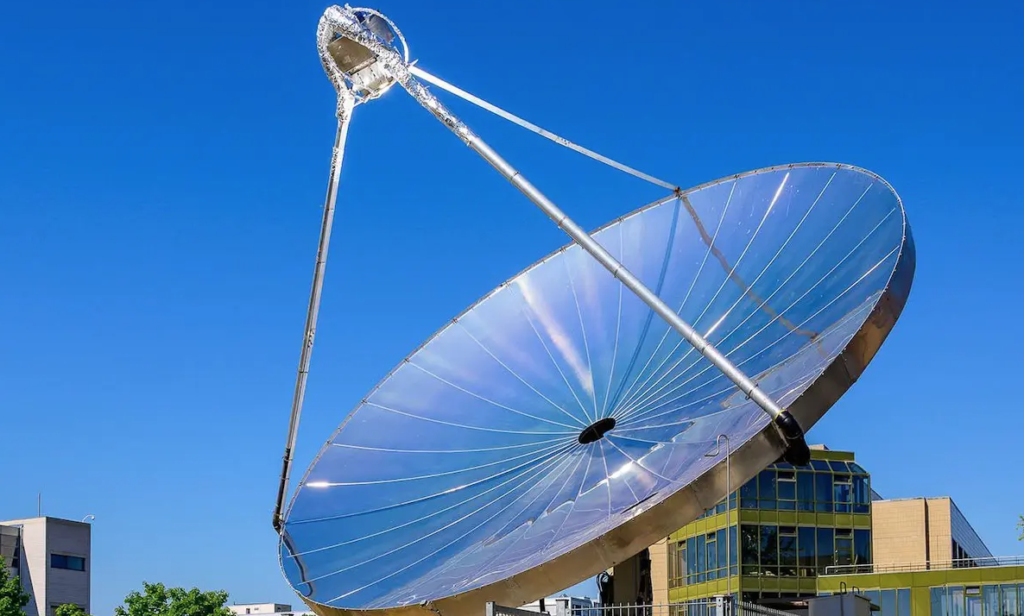New steps for the production of synthetic fuels from water and sun
(sustainabilityenvironment.com) – Obtaining direct production of hydrogen from solar energy, without going through the electricity grid, is one of the great goals of modern research. And although in recent years photoelectrochemical devices have shown growing performance, the best results have always been on a laboratory scale. This is not the case for the École Polytechnique Fédérale de Lausanne (EPFL) which built and tested an efficient integrated system for the production of the vector on a kilowatt scale. To be precise, scientists have created a solar reactor that uses concentrated light to generate green hydrogen and oxygen directly from water.
How the EPFL solar reactor works
The system consists of a large reflective dish that focuses sunlight on the integrated photoelectrochemical reactor, located in the focal point. When water is pumped into it, the electric current generated by the photoelectrodes cleaves the H2O molecules into hydrogen and oxygen. The concentration of light also generates heat that is passed through a heat exchanger in order to be “recycled” for other uses. The design of the solar reactor also allows to recover (rather than disperse in the atmosphere) the oxygen.
The pilot plant built on the EPFL campus has been tested under real conditions. The experiment showed a solar-hydrogen efficiency above 20% at the device level and a production rate of H2 above 2 kW. Specifically, the solar reactor produced about 500 grams of hydrogen a day. “With an output power of over 2 kilowatts, we exceeded the 1 kilowatt limit for our pilot reactor while maintaining record efficiency for this large scale,” said Haussener.
The next step? Researchers, through the spin-off of LRESE, SoHHytec, are already thinking about the commercial implementation. The first to test a 100 kW scale plant could be a Swiss metal producer that will use hydrogen for its annealing processes. Oxygen would instead be used for hospitals in the area and the heat used to heat the water in the factory. The research was published in Nature Energy.

